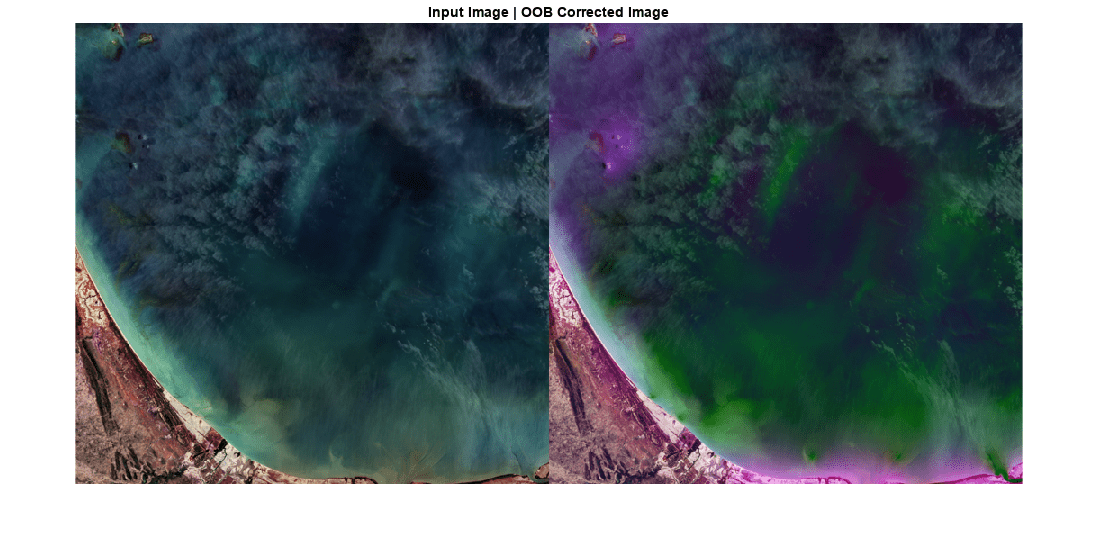correctOOB
Correct out-of-band effect using sensor spectral response
Syntax
Description
newspcube = correctOOB(spcube,spectralResponse)
Use this function to correct OOB effects over different regions such as clear waters, turbid waters, green vegetation, sand, and soil. This method gives best results if the input data is compensated for Rayleigh and aerosol scattering. To measure the OOB effect on scenes with large water bodies, you must first compute the water leaving radiance spectra from the input satellite data.
[
also returns the relative OOB effect for each spectral band.newspcube,oobEffect] = correctOOB(spcube,spectralResponse)
[___] = correctOOB(
specifies the region mask which indicates the homogeneous regions in the input satellite
data.spcube,spectralResponse,RegionMask=mask)
newspcube = correctOOB(___,BlockSize=blocksize)
The function divides the input image into distinct blocks,
processes each block, and then concatenates the processed output of each block to form the
output matrix. Spectral images are multi-dimensional data sets that can be too large to fit in
system memory in their entirety. This can cause the system to run out of memory while running
the correctOOB function. If you encounter such an issue, perform block
processing by using this syntax.
For example, correctOOB(spcube,spectralResponse,BlockSize=[50 50])
divides the input image into non-overlapping blocks of size 50-by-50 and then performs
out-of-band correction on each block.
Note
This function requires the Hyperspectral Imaging Library for Image Processing Toolbox™. You can install the Hyperspectral Imaging Library for Image Processing Toolbox from Add-On Explorer. For more information about installing add-ons, see Get and Manage Add-Ons.
The Hyperspectral Imaging Library for Image Processing Toolbox requires desktop MATLAB®, as MATLAB Online™ and MATLAB Mobile™ do not support the library.
Examples
Input Arguments
Output Arguments
Version History
Introduced in R2020bSee Also
dn2radiance | fastInScene | hypercube | multicube | rrs
